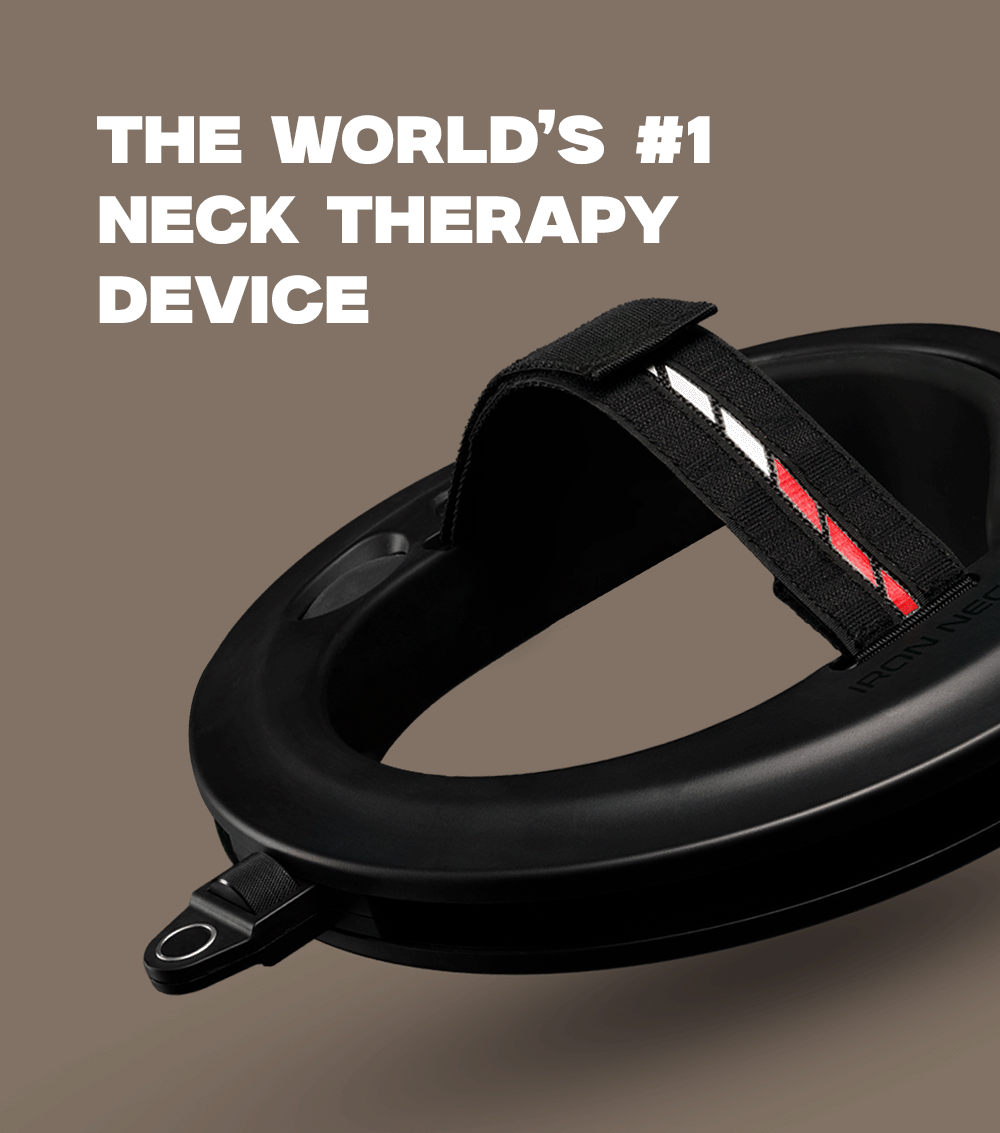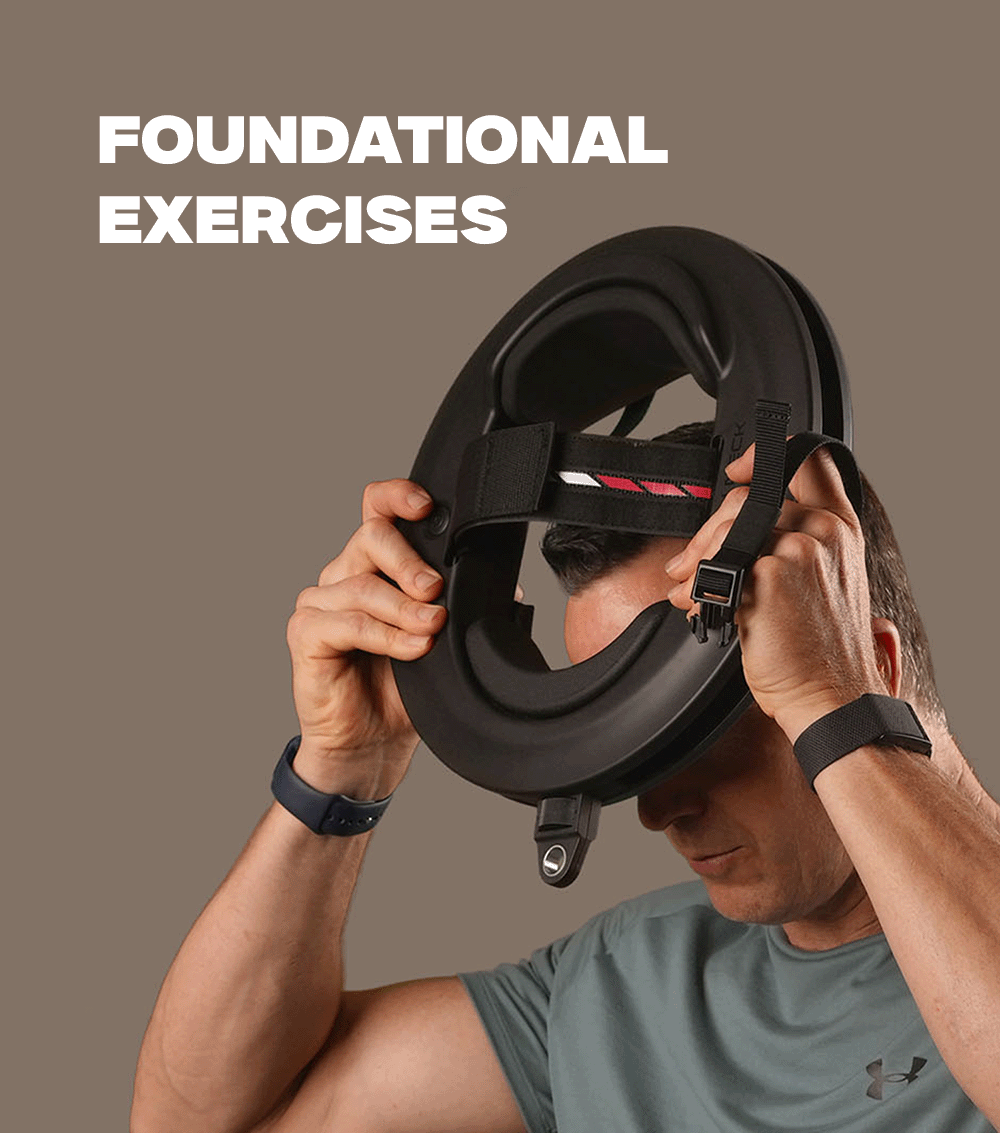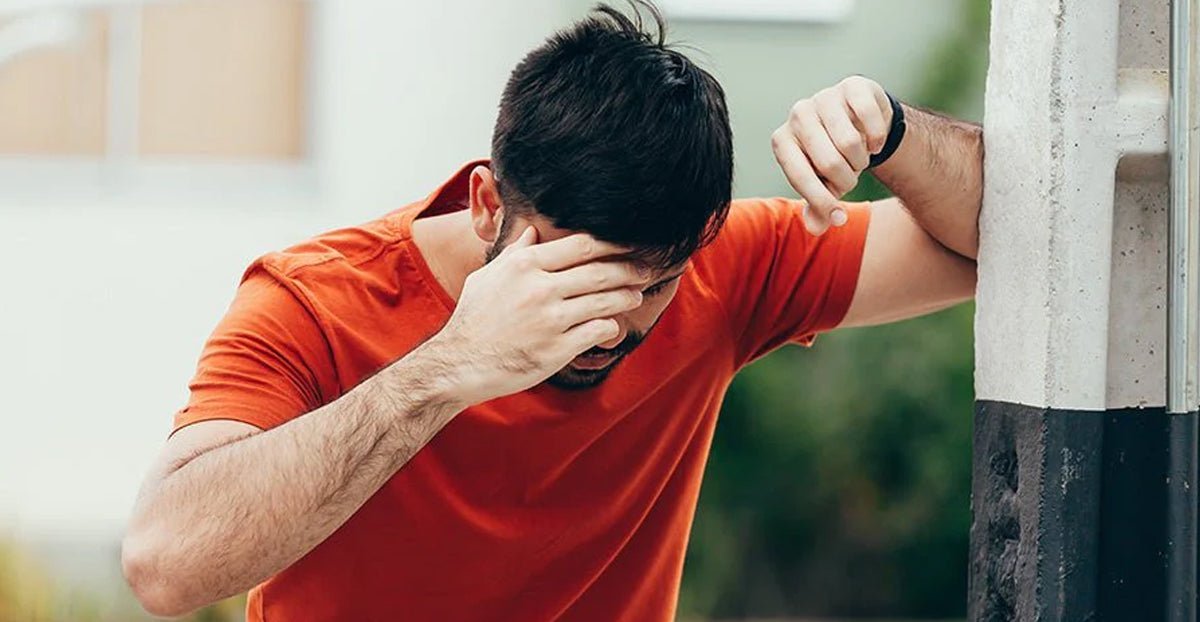Whether it’s from hours hunched over a laptop, scrolling on your phone, or slouching behind the wheel, poor neck posture has quietly become a modern epidemic. And while it might not seem like a big deal at first, that subtle forward head tilt can cause serious problems, such as chronic pain, reduced mobility, tension headaches, and even breathing restrictions (Sheikhhoseini et al., 2018; Yang et al., 2023; Titcomb et al., 2022).
In this complete guide, we’ll break down what “bad neck posture” actually means, what causes it, how to assess it, and most importantly, how to fix it with targeted stretches, strength training, and posture-friendly habits. Whether you're recovering from neck strain, training as an athlete, or just tired of feeling stiff and slouched, this guide will help you retrain your posture from the top down (Fathollahnejad et al., 2019; Elsayed et al., 2024; Suwaidi et al., 2023).
What Is “Bad” Neck Posture?
Bad neck posture isn’t just about looking slouched; it’s about how your head sits with your spine. The most common form is called forward head posture (FHP)often referred to as “text neck”where the head drifts forward in front of the shoulders instead of staying aligned directly above them (Sheikhhoseini et al., 2018; Yang et al., 2023).
When this happens, the muscles in your upper back and neck are constantly working to hold your head up against gravity, often leading to pain, tightness, and fatigue (Fathollahnejad et al., 2019; Titcomb et al., 2022).
Common signs of poor neck posture:
Include ears sitting ahead of the shoulders, tension at the base of the skull or upper traps, limited mobility or stiffness, frequent leaning toward devices, and recurring headaches or shoulder discomfort (Suwaidi et al., 2023; Elsayed et al., 2024).
Temporary slouching isn’t the problem it’s when this misalignment becomes habitual that long-term issues begin to build (Yang et al., 2023).
What Leads to Bad Neck Posture Over Time
Bad neck posture develops gradually through repetitive lifestyle patterns and movement habits. Prolonged technology use, poor desk ergonomics, and slouched driving posture all encourage the head to drift forward (Luo et al., 2023; Shabana et al., 2025). Even improper sleep positions can contribute by keeping the neck in flexion for extended periods (Sheikhhoseini et al., 2018).
Muscle-related causes include weak deep neck flexors, tight pectoral muscles, and overactive upper trapezius and sternocleidomastoid (SCM) muscles, which create tension and imbalance (Fathollahnejad et al., 2019; Park et al., 2020; Titcomb et al., 2022). Additionally, limited thoracic spine mobility restricts proper head alignment and contributes to chronic postural strain (Mehri et al., 2020; Alagingi, 2022).
The Long-Term Impact of Poor Neck Posture
Poor neck posture affects far more than appearance it influences movement, respiration, and musculoskeletal efficiency. Over time, it can cause chronic neck and shoulder pain, tension headaches, shoulder dysfunction, nerve compression, and reduced lung capacity (Yang et al., 2023; Sheikhhoseini et al., 2018; Elsayed et al., 2024).
These issues can impair physical performance, coordination, and even confidence in daily activities (Suwaidi et al., 2023; Fathollahnejad et al., 2019).
5-Step Plan to Fix Your Neck Posture
Correcting posture requires three key elements: strength, mobility, and awareness. Strengthening the small stabilizing muscles that retract the head into alignment especially the deep neck flexors is fundamental to improving forward head posture (Sheikhhoseini et al., 2018; Titcomb et al., 2022; Yang et al., 2023).
1. Chin tucks:
Chin tucks strengthen the deep cervical flexors responsible for neutral alignment. Evidence shows that deep neck flexor training significantly improves craniovertebral angle, neck strength, and postural control (Harman et al., 2005; Fathollahnejad et al., 2019; Saini et al., 2025).
2. Strengthen the Posterior Chain
The posterior chain trapezius, rhomboids, and rear deltoids supports upright posture and counteracts the pull of forward head posture. Strengthening these regions, along with neck-specific resistance exercises, enhances spinal stability and reduces pain (Park et al., 2020; Alagingi, 2022; Li et al., 2017). Exercises such as band pull-aparts, face pulls, rows, and scapular retractions are particularly beneficial (Fathollahnejad et al., 2019; Titcomb et al., 2022).
Athletes and patients alike benefit from progressive resistance training or devices like the Iron Neck, which target multiple planes of neck motion for balanced muscle activation (Li et al., 2017; Mueller et al., 2023; de Zoete et al., 2020).
3. Stretch the Tight Areas
Tightness in the pectoralis minor, sternocleidomastoid, upper trapezius, scalenes, and levator scapulae perpetuates rounded posture. Stretching these muscles reduces tension and complements strengthening interventions (Fathollahnejad et al., 2019; Titcomb et al., 2022; Yang et al., 2023). Each stretch should be held for 30–60 seconds, ideally post-workout to promote flexibility and symmetry.
4. Postural Awareness
Exercise alone is insufficient without continuous postural re-education. Frequent cueing such as aligning the ears over the shoulders, relaxing the shoulders, and maintaining chin retraction builds sustainable habits (Titcomb et al., 2022; Shabana et al., 2025). Consistent mindfulness improves the long-term outcomes of corrective exercise programs (Elsayed et al., 2024; Yang et al., 2023).
5. Use the Right Tools: The Iron Neck Advantage
While static stretches and basic drills are valuable, dynamic resistance devices such as the Iron Neck provide 360° multi-directional training that reinforces proper posture under load. This approach improves both mobility and stability, helping correct muscular imbalances responsible for forward head posture (Li et al., 2017; Mueller et al., 2023; Teichert et al., 2023). Clinical research supports resistance-based and motor-control training as the most effective exercise modalities for improving posture and reducing neck disability (Sheikhhoseini et al., 2018; Yang et al., 2023; Saini et al., 2025).
What it does:
- Trains your neck to hold alignment in real-world positions
- Improves mobility while reinforcing stability
- Addresses muscle imbalances that contribute to forward head posture
- Creates lasting change without the “slump” returning after a workout
From pro fighters to desk workers, Iron Neck users see measurable improvements in posture, reduced pain, and better movement efficiency often in as little as 2–4 weeks.
How Long Until You See Results?
Pain relief and mobility gains from targeted neck exercises can often begin within 2–4 weeks of consistent training, especially when strengthening the deep cervical flexors and scapular stabilizers (Harman et al., 2005; Fathollahnejad et al., 2019; Li et al., 2017). Postural correction typically takes longer around 6–8 weeks as the body adapts and retrains its motor patterns for proper head alignment (Sheikhhoseini et al., 2018; Titcomb et al., 2022).
Once the correct muscles are activated and strengthened, improvements are more likely to last, because the neuromuscular system “learns” efficient posture through consistent reinforcement (Saini et al., 2025; Shabana et al., 2025).
Your Complete Neck Posture Fix Program
A structured, progressive program that includes mobility drills, resistance training (such as with the Iron Neck), and postural awareness can effectively correct forward head posture and reduce chronic neck discomfort (Yang et al., 2023; Mueller et al., 2023).
Research shows that combining daily mobility work with progressive resistance exercises for the deep and superficial neck muscles yields significant improvements in both pain reduction and postural control (de Zoete et al., 2020; Li et al., 2017).
Most participants report noticeable relief and reduced tension within 2–4 weeks, improved posture by 6–8 weeks, and sustained long-term results as the muscles and motor patterns adapt to new postural demands (Sheikhhoseini et al., 2018; Elsayed et al., 2024).
Fixing Neck Posture for Lasting Relief
With resistance-based tools like the Iron Neck, posture correction focuses on rebuilding muscular strength and proprioceptive awareness, rather than just stretching tight tissues (Mueller et al., 2023; Teichert et al., 2023). Consistent, controlled movements train the deep neck flexors, posterior chain, and scapular stabilizers, helping the neck maintain alignment automatically (Saini et al., 2025; Yang et al., 2023).
Whether you’re reversing years of screen-related posture or preventing future strain, research consistently supports the same formula for long-term neck health: targeted strengthening, mobility training, and daily awareness (Fathollahnejad et al., 2019; Titcomb et al., 2022; Alagingi, 2022).
Frequently Asked Questions
1. Can bad neck posture cause headaches?
Yes. Forward head posture strains the muscles at the base of the skull, which can trigger tension headaches and eye strain.
2. How should I sleep to improve neck posture?
Use a pillow that keeps your head aligned with your spine. Avoid sleeping with your neck tilted forward or to one side for long periods.
3. How often should I do posture exercises?
Mobility and awareness drills can be done daily. Strength work, like Iron Neck training, can be done 2–4 times per week.
4. Can I fix years of bad posture?
Yes. Even long-standing posture problems respond to consistent, targeted training. The key is strengthening weak muscles, improving mobility, and reinforcing new alignment habits.
5. Why is Iron Neck so effective for posture correction?
Unlike static exercises, Iron Neck builds neck strength in every direction, improving stability, mobility, and muscular endurance all while training your brain to maintain ideal alignment without conscious effort.
Reference List :
Alagingi, N. K. (2022). Chronic neck pain and postural rehabilitation: A literature review. Journal of Bodywork and Movement Therapies, 30(1), 58–65. [https://doi.org/10.1016/j.jbmt.2022.02.003]
de Zoete, R. D., et al. (2020). Comparative effectiveness of physical exercise interventions for chronic non-specific neck pain: A systematic review with network meta-analysis of 40 randomised controlled trials. British Journal of Sports Medicine, 54(13), 790–799. [https://doi.org/10.1136/bjsports-2019-101562]
Elsayed, W., et al. (2024). Impact of forward head posture correction on craniovertebral angle, neck disability, and spinal electromyography: A randomized controlled trial. Journal of Back and Musculoskeletal Rehabilitation, 37(2), 145–154. [https://doi.org/10.3233/BMR-240112]
Fathollahnejad, K., et al. (2019). The effect of manual therapy and stabilizing exercises on forward head and rounded shoulder postures: A six-week intervention with a one-month follow-up study. BMC Musculoskeletal Disorders, 20(1), 86. [https://doi.org/10.1186/s12891-019-2431-8]
Harman, K., et al. (2005). Effectiveness of an exercise program to improve forward head posture in normal adults: A randomized, controlled 10-week trial. Journal of Manual & Manipulative Therapy, 13(3), 163–176. [https://doi.org/10.1179/106698105790824832]
Li, X., et al. (2017). Comparison of the effectiveness of resistance training in women with chronic computer-related neck pain: A randomized controlled study. International Archives of Occupational and Environmental Health, 90(7), 673–683. [https://doi.org/10.1007/s00420-017-1222-9]
Luo, H., et al. (2023). A skin-integrated device for neck posture monitoring and correction. Microsystems & Nanoengineering, 9(1), 10. [https://doi.org/10.1038/s41378-023-00452-1]
Mehri, A., et al. (2020). Effects of corrective exercises on posture, pain, and muscle activation of patients with chronic neck pain exposed to anterior–posterior perturbation. Journal of Manipulative and Physiological Therapeutics, 43(7), 717–726. [https://doi.org/10.1016/j.jmpt.2020.05.001]
Mueller, J., et al. (2023). Resistance, motor-control, and mindfulness-based exercises for chronic non-specific neck pain: A systematic review and meta-analysis. The Journal of Orthopaedic & Sports Physical Therapy, 53(8), 457–469. [https://doi.org/10.2519/jospt.2023.11221]
Park, S.-H., et al. (2020). Effects of lower trapezius strengthening exercises on pain, dysfunction, posture alignment, muscle thickness and contraction rate in patients with neck pain: A randomized controlled trial. Medical Science Monitor, 26, e923548. [https://doi.org/10.12659/MSM.923548]
Saini, N., et al. (2025). Evaluating the impact of cervical stabilization exercises on chronic neck pain: A systematic review. Musculoskeletal Care, 23(1), e112–e124.
Shabana, A. M. M., et al. (2025). Effect of core stabilization exercises on cervical sagittal balance parameters in patients with forward head posture: A randomized controlled trial in Egypt. Asian Spine Journal, 19(1), 42–53.
Sheikhhoseini, R., et al. (2018). Effectiveness of therapeutic exercise on forward head posture: A systematic review and meta-analysis. Journal of Manipulative and Physiological Therapeutics, 41(6), 530–539. [https://doi.org/10.1016/j.jmpt.2018.06.002]
Suwaidi, A., et al. (2023). A comparison of two forward head posture corrective approaches in elderly with chronic non-specific neck pain: A randomized controlled study. Journal of Clinical Medicine, 12(9), 3122. [https://doi.org/10.3390/jcm12093122]
Teichert, F., et al. (2023). Effectiveness of exercise interventions for preventing neck pain: A systematic review with meta-analysis of randomized controlled trials. The Journal of Orthopaedic & Sports Physical Therapy, 53(5), 250–262. [https://doi.org/10.2519/jospt.2023.11124]
Titcomb, D., et al. (2022). Evidence-based corrective exercise intervention for forward head posture in adolescents and young adults without musculoskeletal pathology: A critically appraised topic. Journal of Sport Rehabilitation, 31(6), 641–648. [https://doi.org/10.1123/jsr.2021-0142]
Yang, S., et al. (2023). Treatment of chronic neck pain in patients with forward head posture: A systematic narrative review. Healthcare, 11(2), 221.[https://doi.org/10.3390/healthcare11020221]
Disclaimer: The Iron Neck blog provides educational content on neck training, fitness, and recovery. It’s not a substitute for medical advice, please consult a healthcare professional before starting any new exercise or recovery program.










Leave a comment
This site is protected by hCaptcha and the hCaptcha Privacy Policy and Terms of Service apply.